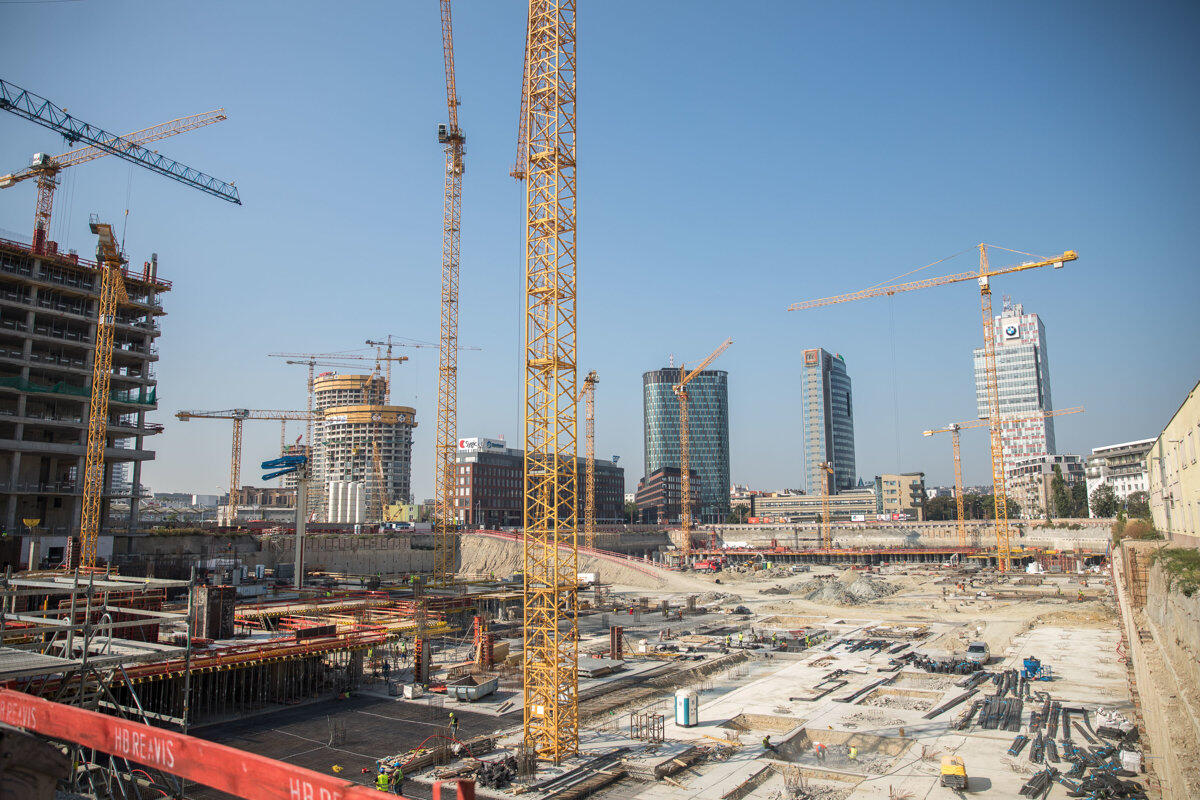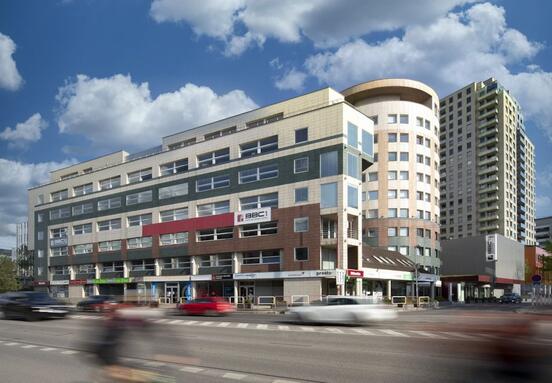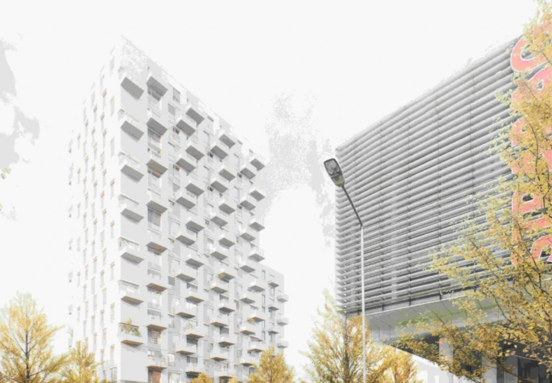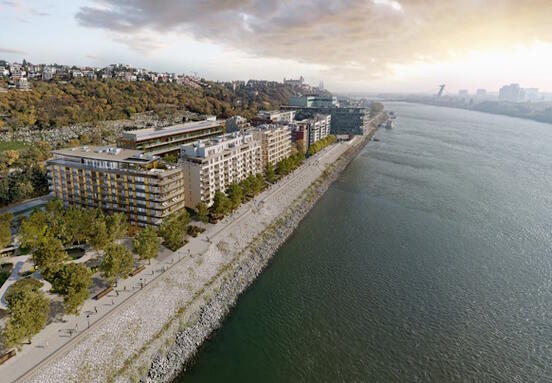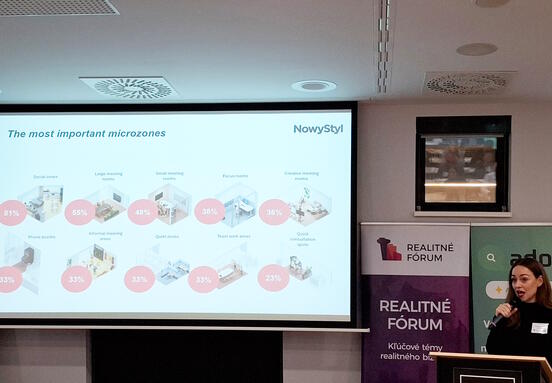The survey was conducted on a sample of 508 respondents aged 18 to 64 from the Bratislava self-governing region from November 2020 to January 2021. The survey narrowly defined the group of people who were looking for real estate in the last 12 months. It focused on the recognizability of developers and their projects, which is an important parameter in assessing the success of developer marketing. The results pointed to several interesting trends and information.
Developers
In the case of knowledge of developers, the "most famous" developer is J&T Real Estate, which is known by up to 22% of people, seconded by HB Reavis, which is known by 20% of respondents. This company dominated the ranking of the first-named companies (the first to spontaneously attack the respondents). YIT Slovakia (15%) and Penta Real Estate (14%) are also relatively well known. Other developers have spontaneous knowledge below 7%. The figures are not very surprising, as they are the largest companies with the largest number of projects, including large-scale developments. Cresco Real Estate, RE / MAX, Corwin, FINEP SK, ATOPS and Proxenta also appeared in the top ten.
It is interesting to break down recognizability depending on whether people have addressed the housing issue in the recent past. In the case of JTRE, 23% of the people who bought an apartment in the last 12 months knew it, 26% of the people who planned it and 20% of the others. HB Reavis knew 15% of buyers, 19% of planners and 22% of others. YIT Slovakia has relatively good numbers, which is known to 28% of people who bought, 15% of those who plan to buy and 12% of others. This information is important not only for marketing teams of development companies but also for corporate strategists. For example, the good numbers of HB Reavis are extremely important for a company that is considering entering the residential segment.
The ranking changes when asked which of the named development companies the respondents knew (ie the interviewers named the companies and the respondents had to determine which they know). The most famous is again JTRE with 69%, but the second is Penta Real Estate with 58%, YIT with 43%, Cresco Real Estate with 19% and also Corwin with 19%. In the top 10 are also FINEP SK, ITB Development, Púpava Development, IURIS Group and Lucron.
The 2Create agency also focused on the influence of gender, age and education on the knowledge of development companies. These statistics show that developers are more familiar with men, by an average of 8%. The most significant difference is with Penta Real Estate, which knows 14% more men than women, and with YIT Slovakia (13%). The age groups are dominated by a group of people between 35 and 45 years of age, followed by a group under 35 years of age. People from the age of 46 know JTRE in particular, but otherwise, their knowledge is significantly lower. In terms of education, university-educated people dominate, with the exception of Púpava Development. A higher proportion of secondary school-educated respondents is in the category "I don't know any of the developers". Higher knowledge of developers is in Bratislava, in contrast to the region.
This is also the basis for determining the typical profile of a person who is interested in development companies. These are mostly university-educated men, slightly fewer women, from Bratislava, between the ages of 35-45. This is again not surprising, as it is this group that has a higher standard disposable income and is looking for housing. Younger people lack funds, the older group already owns apartments, so it is not so motivated to look for information about developers. Companies that were better known outside Bratislava have more projects in the background as standard - an example is Púpava Development, but also Lucron, which is developing its large Arboria project in Trnava.
As a result, however, even 38.4% of respondents cannot name a single developer, although it is in principle a target group of development companies.
Development projects
Knowledge of development projects is obviously related to the interest of buyers in new apartments, positional exposure is probably only in second place. This is confirmed by an overview of projects in the analysis of spontaneous knowledge of development projects. The most famous project is Slnečnice, the largest Slovak post-revolutionary residential development, which is known to 24% of respondents. This is followed by the well-known and exposed Nivy Station with 14%, followed by Cherries Living with 11% or Bory (Mall) with 7%. The top 10 also include Sky Park, Klingerka, Tri veže, Nový Ružinov, Twin City and Panorama Towers.
For the respondents with regard to the housing issue, the ranking is almost identical, but with one exception - Eurovea came in fifth. Anyway, the surprise is the high position of the Three Towers, which are already an older project - however, apartments from this development will still appear on sale from time to time. At the time of the original sale, moreover, with more than 600 flats, it was an extremely massive project, as well as a relatively significant one, so it had to resonate in the respondents.
With supported knowledge, the ranking changes. Although 76% are still dominated by Sunflowers, 60% of people know the first Slovak skyscraper Eurovea Tower, 52% development Bory Home, 51% Blumental and 40% the new Vydrica. Other leading partitions include Cherries, Klingerke, Einpark, Dubravam and Urban Residence. There are several significant projects in this selection, but also larger residential complexes, where it was possible to find apartments of a medium category.
From the point of view of demography, again the knowledge of projects prevailed among men, although there are exceptions - to some extent also Sunflowers, but especially Cherry Living or Cradles from ITB Development. These projects tried to profile themselves as family, which explains the nature of the data obtained. The nature of knowledge is also different according to age, when for projects that were rather of the middle segment, the 35-54 group again dominated, but for some projects, such as Eurovea Tower, Bory or Einpark, knowledge for the segment up to 35 years dominated. In this case, "style" (Eurovea, Einpark) is probably combined with relative accessibility (Bory).
In education or place of residence, the data copied the knowledge of developers, to an even greater extent. Supported knowledge with regard to the housing issue shows that the group of people who bought an apartment in the last year knows best the middle segment projects that were on sale, while the group that is just planning to look more even at more exclusive developments - probably in as part of some personal market research.
What does that suggest?
The data revealed, according to Martin Porad, director of the advertising agency 2Create, clearly shows that brand knowledge leads to success. "Every marketer knows that the creation, or more precisely, the continuous creation of brand awareness is a prerequisite for its successful operation," says an experienced manager. "Unless a developer or development project is registered in the customer consciousness, it is unlikely that he will proactively get to it on his own. From simple pragmatism - the customer does not have the capacity to compare the benefits and shortcomings of all development projects available on the market. "
The disclosed information therefore makes great sense for marketing developers. Many are actively working with the data and gradually improving their recognizability. As 2Create keeps similar statistics on an ongoing basis, it sees that ITB Development, Corwin or YIT Slovakia, for example, jumped significantly, while HB Reavis fell. In order for marketers to accurately assess the effectiveness of communication, they use the "Targeted Knowledge Index" (ITA), which compares the spontaneous knowledge and knowledge of people who have addressed a housing issue. When comparing year-on-year statistics, it is thus possible to estimate how the developer successfully targets the target group. ITB Development and Dandelion Development do best in this.
However, in addition to data important for marketing, the survey also revealed something else. It is obvious that people are enormously interested in the middle segment of projects, ie schemes designed for the middle class. In Bratislava, this is a relatively problematic group, as the offer is gradually shrinking and the number of projects that will be on offer in this direction is decreasing. Naturally, some of them will be on offer for a long time - for example, Sunflowers and Bory will add a large number of stages and thousands of new apartments - but in locations closer to the city center there is little.
It seems that Bratislava is going through a similar development as some big cities, where it is possible to obtain "affordable housing" within the wider center only in the city but in state-subsidized housing or in rental flats. With the exception, all offers are above the middle class. However, Bratislava is different in several ways. Unlike foreign capitals, the Slovak capital has to deal acutely with the issue of replacement housing for restitutors, housing for the necessary professions or the prevention of loss of housing for the poorer, which excludes other middle-class people. At the same time, it has large areas in the wider center, suitable for construction, while foreign cities do not.
Here again, the needs of the city collide with the current wording of the Spatial Plan. It does not allow the construction of flats on many suitable areas. Today, according to the Capital Plan, the zoning plan provides the potential for the construction of about 48 thousand apartments, but the rate of increase is too low and a large part of these apartments are luxury units, unavailable to most residents.
Basically, any analysis, regardless of the source, thus points to the need for an acute solution to the housing crisis. Developers would undoubtedly meet with great public interest if they had the opportunity to build new projects of more affordable housing. However, they need the conditions for that. These include a more up-to-date Spatial Plan, more favorable setting of standards, faster permitting processes or a more logical setting of the Development Fee. And last but not least, proper marketing - because it is necessary to understand that construction is not only in the commercial but also in the public interest. Both the local government and the private sector can work on this.
Source:// YIMBA
